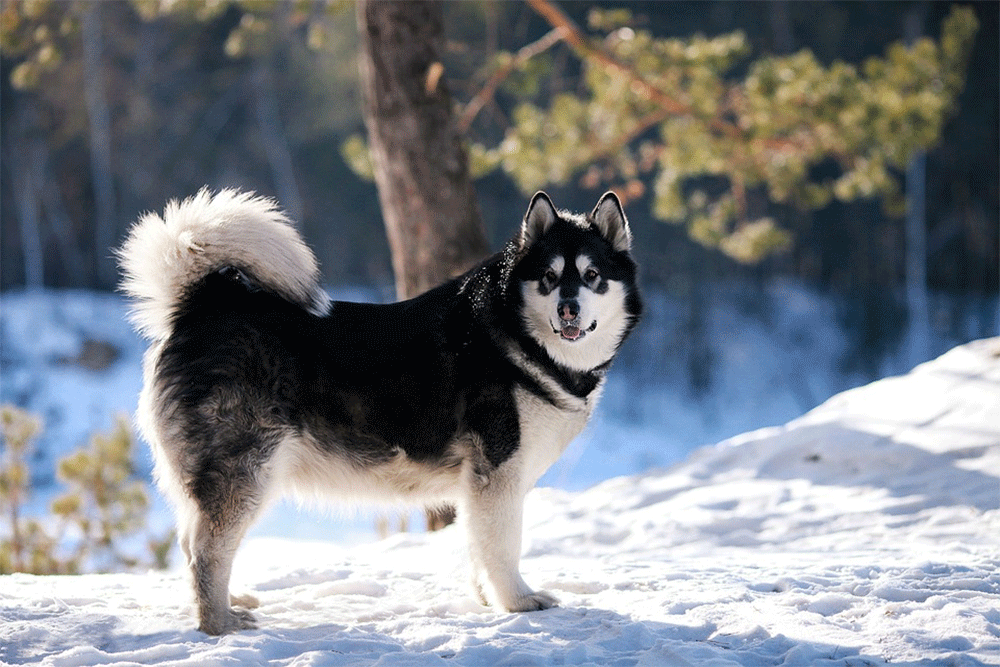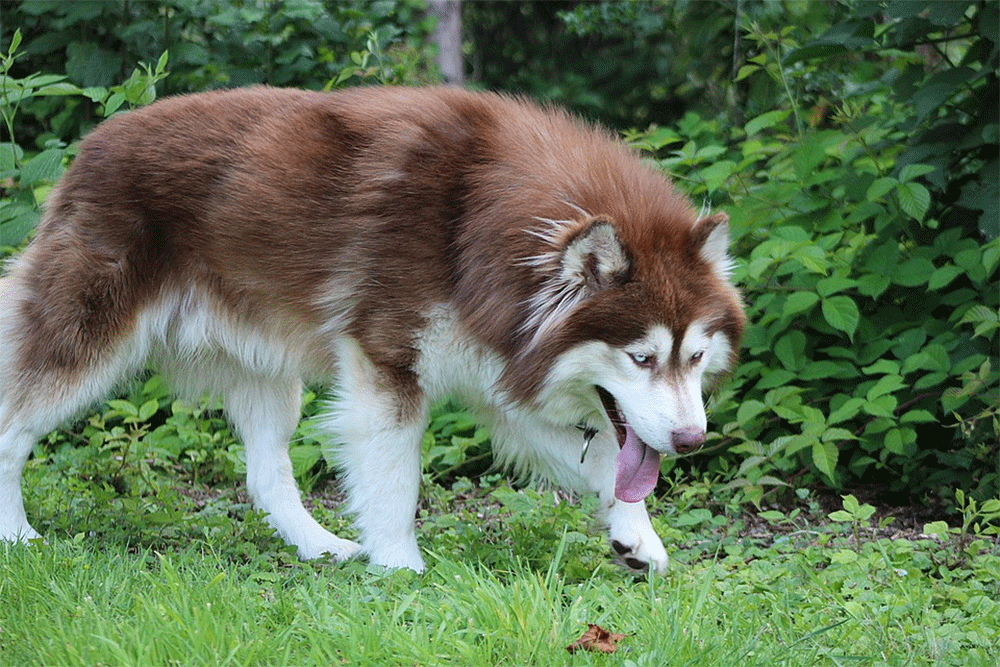The Alaskan Malamute is a large dog, and they need food for fuel. With a high quality kibble, a Malamute may need 1 to 2 cups per day. This should be supplemented with raw meats, and other foods.
It’s incredibly important not to overfeed a Malamute, as this will make them sick. Malamutes don’t know when to stop, so it’s up to you to be sure they only get what they need. Beware, a Malamute can be greedy, and may beg at your feet for extra scraps.
With such gentle eyes it’s hard to resist! Because of this, it’s vital to understand how much to feed a Malamute. You should never free feed a Malamute. Free feeding is when a bowl is left filled throughout the day, and the dog can help itself. A Malamute will take too much.

A Malamute should typically be fed twice a day, once in the morning and once in the afternoon. This should be enough to keep them going, without becoming unhealthy. A working Malamute will probably need to be fed more often.
Malamutes can eat kibble, but they can also enjoy a raw meat diet. Some owners even choose to feed their Malamute entire prey animals, to recreate the wild experience.
All Alaskan Malamutes are different, and the advice given here is only a general overview. You should adapt the dog’s diet to fit their lifestyle, and respond to their needs. A well-fed Malamute should be happy and active.
Can Alaskan Malamutes eat raw meat?
Yes, an Alaskan Malamute can eat raw meat, and it’s actually a fantastic food source for them. An entirely raw meat diet is often cost prohibitive, but supplementing high-quality kibble with raw meat can be an extra nutritional boost for your Malamute.
Raw meat is what an Alaskan Malamute would be eating in the wild, and what they’ve developed to eat. The Malamute is an ancient breed, so it’s had plenty of years developing for a raw meat diet.
That means meat can actually be the best thing for them, because they make use of all the nutrition and fuel provided. Many raw diet followers report that their dogs have an energy they were lacking when eating kibble.
Perhaps a surprising benefit to eating raw meat is cleaner teeth. Tearing through meat helps keep a Malamutes teeth clean and healthy, preventing bad breath and gum disease. Much better than struggling with a doggy toothbrush!
If you don’t intend to feed you Malamute a raw meat diet, look for kibble with meat as a primary ingredient. This way, you can avoid kibbles that are too high in carbohydrates, which a dog will struggle to digest.
A chunk of raw beef a week can make a Malamute very happy! It can also lead to an improved coat, good gut health, and better teeth. Always keep an eye out for high-quality meat, that you can be sure is free of other additives or dangerous ingredients.
Can Malamutes eat bones?
Yes, the Alaskan Malamute can eat raw bones, and it’s actually a great part of their diet. Tearing and biting through bones naturally cleans a dog’s teeth, and it can strengthen the jaw muscles. If you can, it’s good to feed a Malamute raw meat, on the bone, at least occasionally.
The primary reason to give dogs bones is for dental health. When the Malamute chews on a bone, it’s teeth rub against the hard surface. This will scrape off plaque. A buildup of plaque can lead to gum disease, and this can have terrible long term consequences. Gum disease can spread through the body via the bloodstream, infecting the heart and lungs.
The act of chewing itself is also beneficial, particularly if the bone still has meat on. As the dog fights to get the meat off, the muscles around the jaw, neck, and shoulder are all worked.
It also provides the dogs with entertainment. Malamutes are smart dogs, who have been bred for activity. Giving them a bone to chew on prevents boredom, by keeping them occupied.
Malamutes are big dogs, so they particularly enjoy big bones. Avoid bones that are too small, as the dog can choke. Bones from lamb or beef are particularly good.
All bones you give to a dog should be raw. Cooked bones, such as those in cooked chicken thighs, splinter easily. This can then be swallowed by the dog, and the sharp ends can cause internal problems.
Can Alaskan Malamutes drink milk?

An Alaskan Malamute may be able to drink milk, but it does depend on the dog. Malamutes can be lactose intolerant, and milk would make them sick. Other Malamutes can drink milk without it causing any problems. Unfortunately, you probably won’t know how they react until they try.
Malamutes have big appetites, and they don’t know when to say no or what not to eat. This is rooted in centuries of instinct. Alaskan Malamutes were raised in freezing environments, and food was often scarce. For that reason, they learned to eat what they could, whenever they could.
However, one food they wouldn’t have had much access to is cow’s milk. Therefore, it may lead to an upset stomach because the dog doesn’t have enough lactase to break down the milk.
If your Malamute has drunk milk, you shouldn’t panic. If they are intolerant, they’ll start to show signs of sickness such as vomiting and diarrhea. Keep a close eye to see that they’re doing okay, and if they show any symptoms then consult a vet for advice. If they aren’t lactose intolerant, they’ll simply get on with their day.
If your Malamute is always begging for milk, and you want to let them try it, then exercise caution. Let them have a small amount and see how their stomachs react. Don’t let them have as much as they want, because they’ll probably over indulge. Always consult a vet before adding something new to your dog’s diet.
https://www.youtube.com/watch?v=-sN4WK0u5w4
